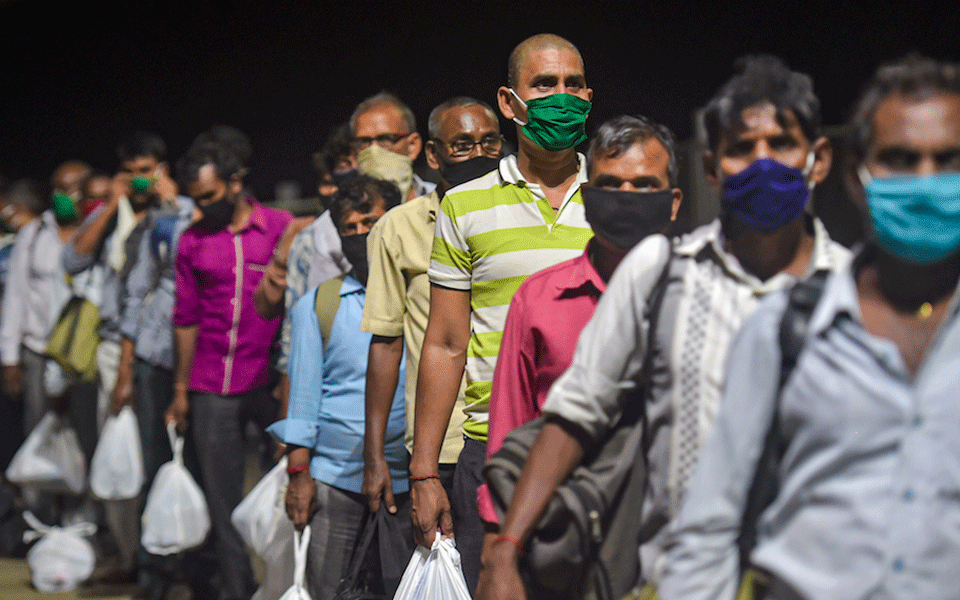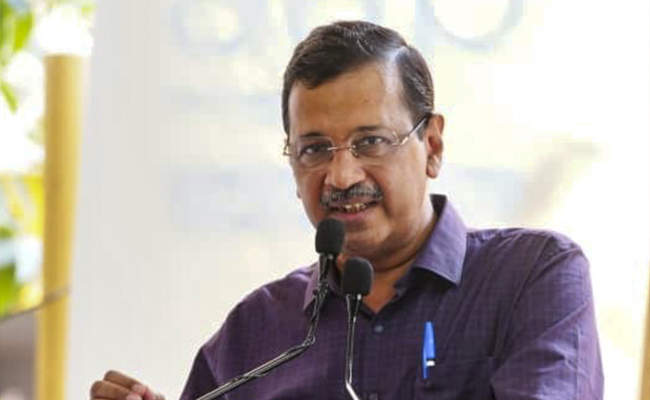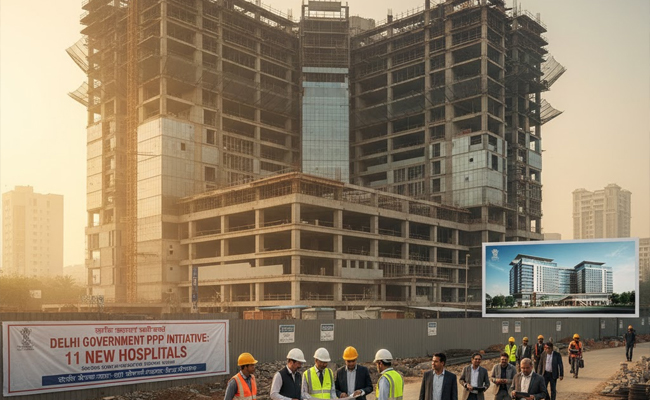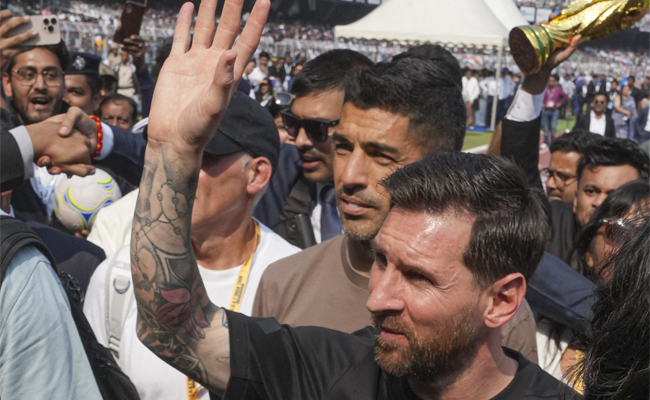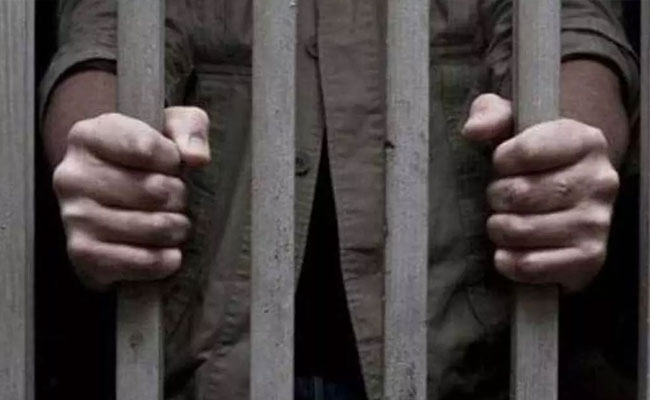United Nations (PTI): The number of poor people in India fell by about 415 million between 2005-06 and 2019-21, a historic change and a demonstration that the Sustainable Development Goal target of reducing at least by half the proportion of men, women and children of all ages living in poverty by 2030 is possible to achieve, even at a large scale, according to the UN.
The new Multidimensional Poverty Index (MPI) released on Monday by the United Nations Development Programme (UNDP) and the Oxford Poverty and Human Development Initiative (OPHI) at the University of Oxford said that in India, 415 million people exited poverty between 2005/06 and 2019/21.
It demonstrates that "the Sustainable Development Goal target 1.2 of reducing at least by half the proportion of men, women and children of all ages living in poverty in all its dimensions according to national definitions by 2030 is possible to achieve and at scale", it said.
The UN in a press release on the report said that "in India, some 415 million people left multidimensional poverty in a 15-year period -- a historic change .
"India is an important case study for the Sustainable Development Goals, the first of which is to end poverty in all its forms and to reduce at least by half the proportion of men, women and children of all ages living in poverty in all its dimensions according to national definitions by 2030, all while leaving no one behind" it said.
The report said based on 2020 population data for India, it has by far the largest number of poor people worldwide (228.9 million), followed by Nigeria (96.7 million projected in 2020).
Despite progress, India's population remains vulnerable to the mounting effects of the COVID-19 pandemic and to rising food and energy prices. Integrated policies tackling the ongoing nutritional and energy crises should be a priority, it said.
Despite tremendous gains, the ongoing task of ending poverty for the 228.9 million poor people in 2019/2021 is daunting especially as the number has nearly certainly risen since the data were collected.
There were still 97 million poor children in India in 2019/21 more than the total number of poor people, children and adults combined, in any other country covered by the global MPI. Yet, these multipronged policy approaches show that integrated interventions can improve the lives of millions of people, the report said.
The poorest states and groups in India (children, lower castes and those living in rural areas) reduced poverty the fastest in absolute terms, although the data do not reflect post-Covid-19 pandemic changes, the report said.
While poverty among children fell faster in absolute terms, India still has the highest number of poor children in the world (97 million, or 21.8 per cent of children ages 0 17 in India), it said.
The report said across 111 countries, 1.2 billion people 19.1 per cent live in acute multidimensional poverty. Half of these people - 593 million - are children under age 18.
The analysis looks at the most common deprivation profiles across 111 developing countries. The most common profile, affecting 3.9 per cent of poor people, includes deprivations in exactly four indicators: nutrition, cooking fuel, sanitation and housing.
More than 45.5 million poor people are deprived in only these four indicators. Of those people, 34.4 million live in India, 2.1 million in Bangladesh and 1.9 million in Pakistan making this a predominantly South Asian profile, it said.
In some countries, subnational regions that were initially among the poorest in their country reduced poverty faster in absolute terms than the national average, narrowing the poverty gap. These include Bihar, Jharkhand and Uttar Pradesh in India (2015/2016 2019/2021).
The report said the reduction in Multidimensional Poverty Index (MPI) value in India was swift across the two most recent periods.
Of the nearly 415 million people who exited poverty in India in the 15 years prior to the COVID-19 pandemic, roughly 275 million did so between 2005/2006 and 2015/2016 and 140 million did so between 2015/2016 and 2019/2021.
The country's MPI value and incidence of poverty were both more than halved. India's progress shows that this goal is feasible, even at a large scale, it said.
The report noted that the effects of the COVID-19 pandemic on poverty in India cannot be fully assessed because 71 per cent of the data from the 2019/2021 Demographic and Health Survey for the country were collected before the pandemic.
The 2019-2021 data show that about 16.4 per cent of India's population live in poverty, with an average intensity of 42 per cent.
About 4.2 per cent of the population live in severe poverty. About 18.7 per cent of people, roughly the same proportion as in 2015-2016, are vulnerable to poverty because their deprivation score ranges from 20 per cent to 33 per cent. Two-thirds of these people live in a household in which at least one person is deprived in nutrition a worrying statistic , it said.
The percentage of people who are poor is 21.2 per cent in rural areas compared with 5.5 per cent in urban areas. Rural areas account for nearly 90 per cent of poor people: 205 million of the nearly 229 million poor people live in rural areas making them a clear priority.
Noting that children are still the poorest age group, the report said that in India more than one in five children are poor (21.8 per cent) compared with around one in seven adults (13.9 per cent). This translates to 97 million poor children.
India is the only country in South Asia in which poverty is significantly more prevalent among female-headed households than among male-headed households. About 19.7 per cent of people living in female-headed households live in poverty compared with 15.9 per cent in male-headed households.
One in seven households is a female-headed household, so around 39 million poor people live in a household headed by a woman.
India's reduction in MPI value continued to be pro-poor in absolute terms, as it was from 2005/2006 to 2015/2016, the report said. Rural areas were the poorest and saw the fastest reduction in MPI value. The incidence of poverty fell from 36.6 per cent in 2015/2016 to 21.2 per cent in 2019/2021 in rural areas and from 9.0 per cent to 5.5 per cent in urban areas.
Children, the poorest age group, saw the fastest reduction in MPI value. The incidence of poverty fell from 34.7 percent to 21.8 per cent among children and from 24.0 per cent to 13.9 percent among adults.
Similarly, the poorest caste and religious groups saw the fastest absolute reduction in the recent period. This general pattern continues across the states and union territories.
Bihar, the poorest state in 2015/2016, saw the fastest reduction in MPI value in absolute terms. The incidence of poverty there fell from 77.4 per cent in 2005/2006 to 52.4 per cent in 2015/2016 to 34.7 per cent in 2019/2021, the report said.
Across states and union territories in India, the fastest reduction in relative terms was in Goa, followed by Jammu and Kashmir, Andhra Pradesh, Chhattisgarh and Rajasthan.
In relative terms the poorest states have not caught up. Of the 10 poorest states in 2015/2016, only one (West Bengal) was not among the 10 poorest in 2019/2021. The rest Bihar, Jharkhand, Meghalaya, Madhya Pradesh, Uttar Pradesh, Assam, Odisha, Chhattisgarh and Rajasthan remain among the 10 poorest.
The pace and patterns of MPI reduction in India vary across states and union territories. While additional analysis is needed to clarify the drivers of change in each context, it is clear that multiple policy actions and schemes underpin these results.
There have been visible investments in boosting access to sanitation, cooking fuel and electricity indicators that have seen large improvements. A policy emphasis on universal coverage for example, in education, nutrition, water, sanitation, employment and housing likely contributed to these results.
"But questions remain as to how spending patterns, performance incentives, institutions, non state actions, integrated policy packages and local dynamics in each setting drove change. Such studies will benefit many countries seeking to swiftly and massively reduce acute poverty, it said.
Let the Truth be known. If you read VB and like VB, please be a VB Supporter and Help us deliver the Truth to one and all.
Panaji (PTI): As part of a crackdown against tourist establishments violating laws and safety norms in the aftermath of the Arpora fire tragedy, Goa authorities on Saturday sealed a renowned club at Vagator and revoked the fire department NOC of another club.
Cafe CO2 Goa, located on a cliff overlooking the Arabian Sea at Vagator beach in North Goa, was sealed. The move came two days after Goya Club, also in Vagator, was shut down for alleged violations of rules.
Elsewhere, campaigning for local body polls, AAP leader Arvind Kejriwal said the fire incident at Birch by Romeo Lane nightclub at Arpora, which claimed 25 lives on December 6, happened because the BJP government in the state was corrupt.
An inspection of Cafe CO2 Goa by a state government-appointed team revealed that the establishment, with a seating capacity of 250, did not possess a no-objection certificate (NOC) of the Fire and Emergency Services Department. The club, which sits atop Ozrant Cliff, also did not have structural stability, the team found.
The Fire and Emergency Services on Saturday also revoked the NOC issued to Diaz Pool Club and Bar at Anjuna as the fire extinguishers installed in the establishment were found to be inadequate, said divisional fire officer Shripad Gawas.
A notice was issued to Nitin Wadhwa, the partner of the club, he said in the order.
Campaigning at Chimbel village near Panaji in support of his party's Zilla Panchayat election candidate, Aam Aadmi Party leader Kejriwal said the nightclub fire at Arpora happened because of the "corruption of the Pramod Sawant-led state government."
"Why this fire incident happened? I read in the newspapers that the nightclub had no occupancy certificate, no building licence, no excise licence, no construction licence or trade licence. The entire club was illegal but still it was going on," he said.
"How could it go on? Couldn't Pramod Sawant or anyone else see it? I was told that hafta (bribe) was being paid," the former Delhi chief minister said.
A person can not work without bribing officials in the coastal state, Kejriwal said, alleging that officers, MLAs and even ministers are accepting bribes.

